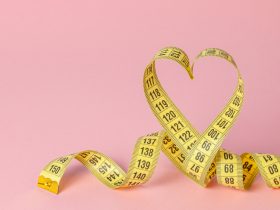In today’s fast-paced world, managing Type 2 diabetes while trying to shed those extra pounds can be quite challenging. But fret not! We’ve got you covered with eight invaluable tips that can help you embark on a successful journey towards Type 2 diabetes weight loss. Remember, it’s not just about shedding the pounds; it’s about leading a healthier and happier life.
Long-term exposure to a high body mass index is associated with an increased risk of acquiring type 2 diabetes, according to certain studies. Active fat tissue releases and responds to hormones that elevate metabolic syndrome risk factors, such as insulin resistance and glucose intolerance. However, dropping just 10–15 pounds can have a significant effect on your health and blood sugar levels.
The process of losing weight and maintaining that loss is difficult for everyone. The benefits to people with diabetes are substantial, and they are achievable, but where do you even begin? If you have diabetes, a nutritious diet should be a part of your overall management plan for weight loss, according to experts.
How to get started on the road to weight loss success while you have diabetes;
1. To be active
Diet has been shown to be the most important aspect of weight loss, but exercise is essential for long-term success. People who lost 30 pounds or more were shown to benefit more from exercise than from dietary changes, according to one study. Ninety percent of people who lost weight and kept it off reported exercising for an hour a day, according to data collected by the medical school at Brown University.
Exercise for 30 minutes, five days a week, for a total of 150 minutes per week. Also, keep in mind that you can be physically healthy without spending hours per week in the gym. Make an effort to keep moving around as much as possible. Small adjustments like these can add up to significant results in the long run.
2. Aim low and achieve more
Maintaining a healthy weight after weight loss is a challenge in and of itself. While rapid weight loss in the early stages of a diet is always encouraging, it’s important to remember that extreme measures like cutting out entire food groups or engaging in marathon training aren’t healthy in the long run. To make a lasting difference, it’s best to concentrate on tweaks that won’t require constant readjusting.
Don’t try to make drastic changes to your body overnight, McLaughlin warns. I see that as a potential disaster in the making. Consider starting with more manageable goals, such as taking four short walks around the block each week or limiting yourself to dessert on the weekends only.
As soon as you’ve established these practices as habits, you can move on to the next goal. As you reach each subsequent weight loss milestone, you’ll feel a sense of pride in your efforts. Remember that you are not alone in experiencing difficulties; therefore, you should not give up easily.
3. Reduce your calorie intake
A diet that is high in calories and fat can lead to high blood sugar. If you want to lose weight, cutting back on calories is essential.
To choose a diet that fits your needs, goals, and preferences, it’s best to consult with a licensed dietitian or diabetes educator. Depending on your age, gender, present weight, amount of activity, and body type, they can advise you on the optimal calorie intake for controlling your blood sugar.
4. Breakfast should be part of a planned eating schedule
The majority of those who filled out the weight control register also shared the habit of eating breakfast every day. Overeating later in the day, which can derail weight-loss efforts and create blood sugar fluctuations, is a possible result of skipping breakfast. Breakfast eaters may have more stamina to get things done during the day.
Whether or not eating breakfast helps you lose weight is a topic of much discussion. Eating breakfast has been linked to better weight loss in one meta-analysis, but a more recent evaluation of studies suggests it may not always have that effect. A daily breakfast is still recommended by the ADA. A diabetes diet that works, according to experts, entails eating three meals per day at roughly the same time to help the body make better use of insulin.
Whole grains, fruits, and low-fat dairy are all great examples of high-fiber, healthy carbohydrate breakfast options that can help maintain stable blood sugar levels throughout the morning. Don’t buy cereal or other sugary morning foods unless you read the nutrition label beforehand.
5. Do not lose sight of your objectives
Keeping track of your weight reduction journey in writing might help you set realistic goals and identify patterns. You can see how far you’ve come over time and identify periods of time when you may have strayed from a healthy diet.
To better track your diet, try keeping a daily food journal. Be sure to include details like the serving size and when each meal was consumed. Tired of using pencil and paper? Check out one of the numerous available apps, many of which are free. As suggested by your healthcare team, RD, or diabetes educator, you should get on the scale once a week at the very least. Keep track of your workouts, what you did, and how you felt afterward.
6. High-fiber diet
Calorie restriction can be difficult if you start to feel hungry soon after eating. Fiber, a carbohydrate found in plants, plays a role in maintaining healthy blood sugar levels by slowing the digestive process.
High-fiber foods are typically lower in calories than other foods of the same volume, so you can eat more of them without gaining weight. They make you feel satiated for longer because they take longer to consume and digest. According to research released in April 2023, those who consume more fiber are more likely to maintain their weight loss after switching to a diet with fewer calories.
The 2020–2025 Dietary Guidelines for Americans from the United States Department of Agriculture (USDA) recommend that women between the ages of 31 and 50 get at least 25 grams (g) of fiber per day, while men between the ages of 31 and 50 consume roughly 31 grams. Women aged 51 and up have a reduced nutrient requirement of around 22 g per day, while men in the same age range require at least 28 g.
The vast majority of us fall far short of the USDA’s recommended intake. Whole grains, vegetables, fruits, legumes (beans), nuts, and seeds are all great sources of fiber; see if you can include them more often in your diet. Make salads, soups, and chili with chickpeas and black beans. Mix spinach into the sauce for the spaghetti. You might also have an apple with 1 tablespoon of nut butter as a snack.
7. Find help
When trying to lose weight on your own, it can be tough to maintain the motivation necessary to see the process through. The emotional support you need to keep going when you want to give up might be found in the company of others. The idea that having a social network can help boost motivation is central to many weight loss methods.
Remember that help can come in many forms. McLaughlin argues that “for some people,” online support groups can be “just as effective” as in-person support groups, in addition to being more convenient and less expensive.
8. Try these tips to control your eating
You can avoid eating too many unhealthy meals by employing these covert techniques.
- Learn to keep your hands occupied. Being idle increases your risk of snacking when you’re not hungry. Keep active by going on walks, knitting, scrapbooking, solving crossword puzzles, and tending to a garden.
- Always have a toothbrush and paste on hand. Hold onto them in your handbag or briefcase. Peppermint-flavored toothpaste can help curb your appetite when hunger pangs strike by making you feel more refreshed after cleaning your teeth.
- Make a point of being fashionably late to events. You likely won’t consume as much food if you don’t spend as much time at the buffet table or snacking on fatty appetizers.
- Eat fewer calories to start. Vegetable appetizers that don’t rely on starch are a great way to cut calories. You won’t be as hungry by the time you get to the other foods.
- Attempt a new method of salad dressing. When eating salad, dip your fork into a separate bowl of dressing before spearing a piece of salad. You’ll be astounded by how much energy and calories you save by cutting back.
Maintaining a balanced diet and regular exercise routine after reaching your weight loss goal is essential. That’s why it’s crucial to aim low and aim often. The weight loss you achieve from adopting healthier lifestyle practices should be permanent. If you want to lose weight and control your type 2 diabetes, you need to make lifestyle adjustments that will last. Talk to your doctor, eat right, get regular exercise, and learn to deal with stress. By following these guidelines, you can better manage your type 2 diabetes and take care of your entire health.
















Find Us on Socials